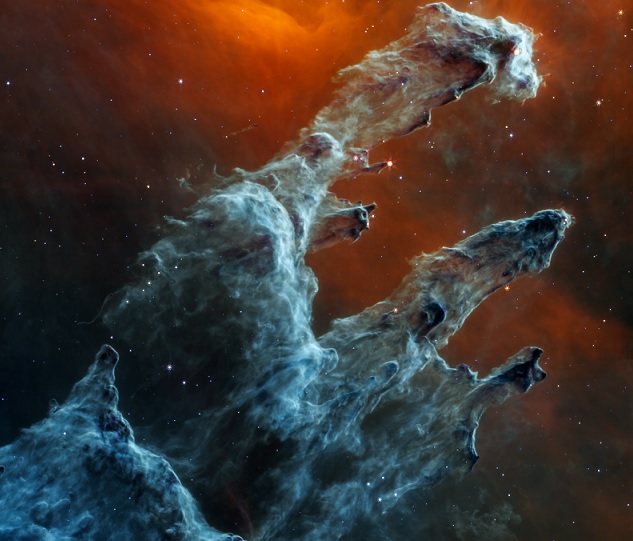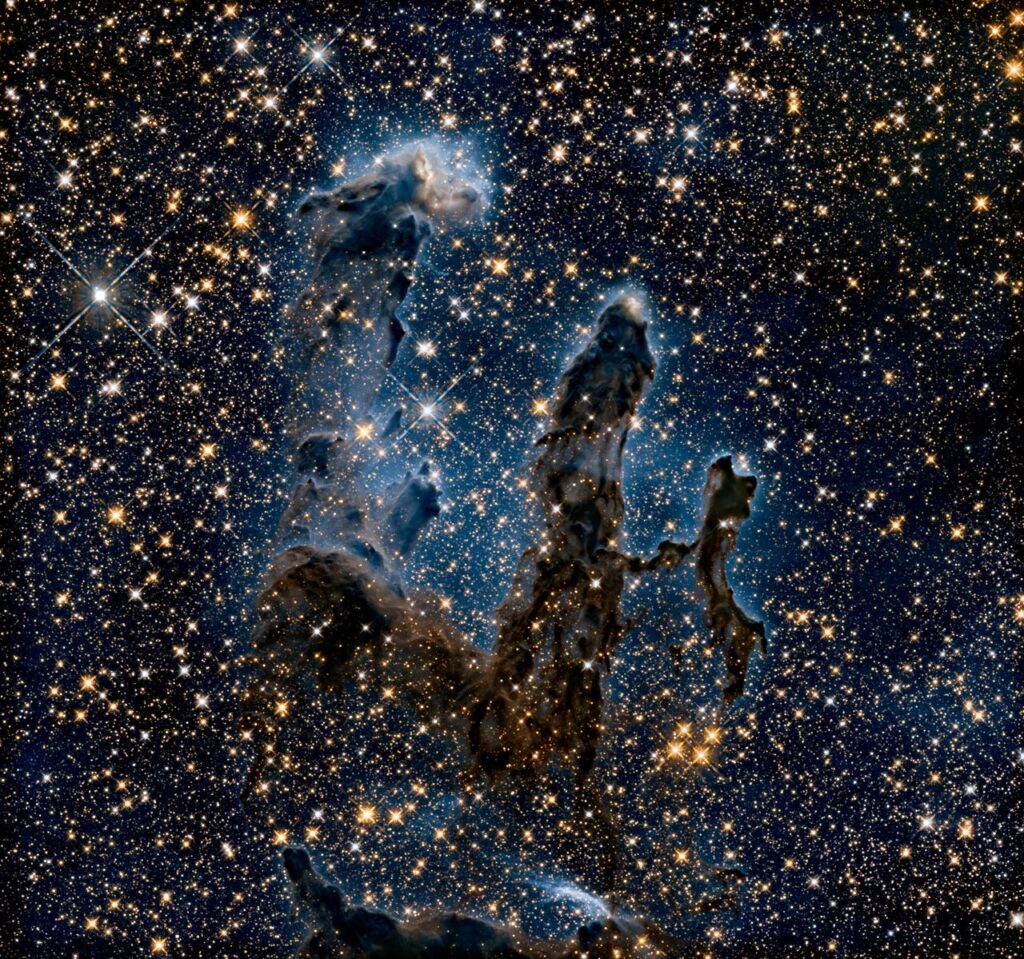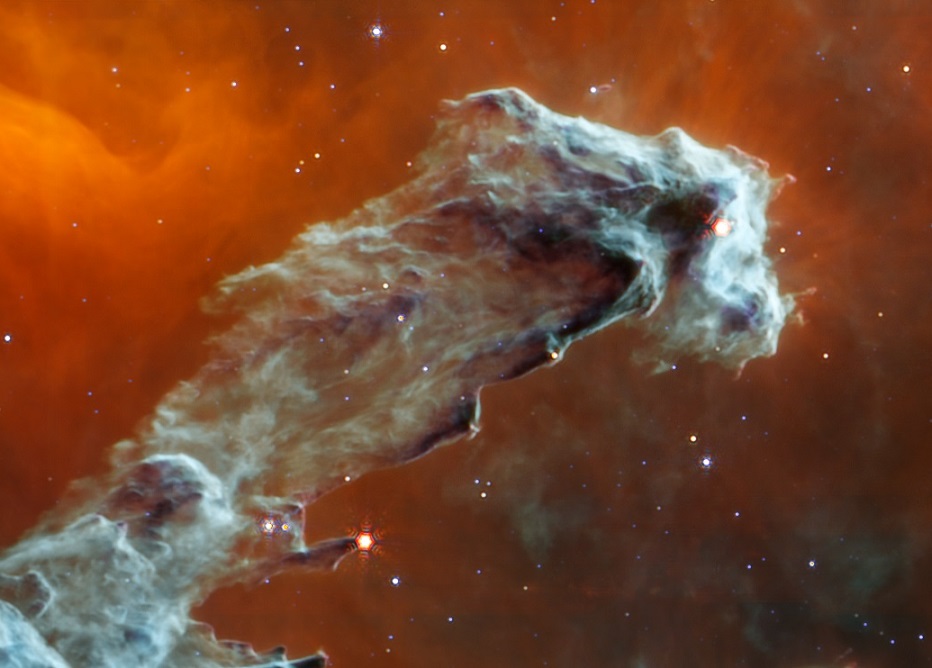NASA’s James Webb Space Telescope’s mid-infrared view of the Pillars of Creation strikes a chilling tone, reported NASA. Thousands of stars that e
NASA’s James Webb Space Telescope’s mid-infrared view of the Pillars of Creation strikes a chilling tone, reported NASA.
Thousands of stars that exist in this region disappear, and seemingly endless layers of gas and dust become the centerpiece. The detection of dust by Webb’s Mid-Infrared Instrument -MIRI- is extremely important, dust is a major ingredient for star formation.

Many stars are actively forming in these dense blue-gray pillars. When knots of gas and dust with sufficient mass form in these regions, they begin to collapse under their own gravitational attraction, slowly heat up, and eventually form new stars, reported NASA.

Although the stars appear missing, they aren’t. Stars typically do not emit much mid-infrared light. Instead, they are easiest to detect in ultraviolet, visible, and near-infrared light. In this MIRI view, two types of stars can be identified. The stars at the end of the thick, dusty pillars have recently eroded the material surrounding them, reports NASA.

They show up in red because their atmospheres are still enshrouded in cloaks of dust. In contrast, blue tones indicate stars that are older and have shed most of their gas and dust.
Mid-infrared light also details dense regions of gas and dust. The red region toward the top, which forms a delicate V shape, is where the dust is both diffuse and cooler, reported NASA.

Webb’s mid-infrared data will help researchers determine exactly how much dust is in this región, and what it’s made of. These details will make models of the Pillars of Creation far more precise.
Over time, we will begin to more clearly understand how stars form and burst out of these dusty clouds over millions of years, reported NASA.
All Credits to:
NASA, ESA, CSA, STScI


